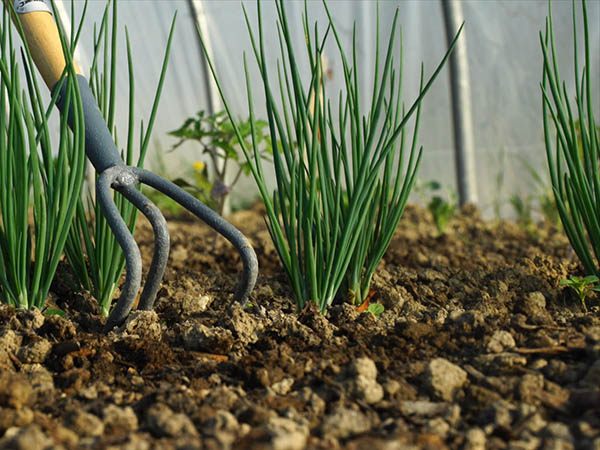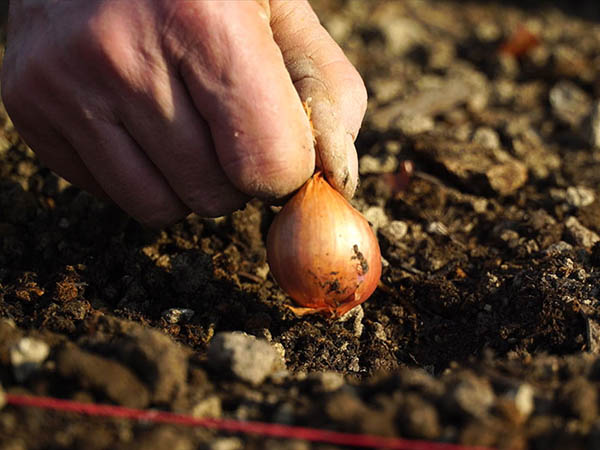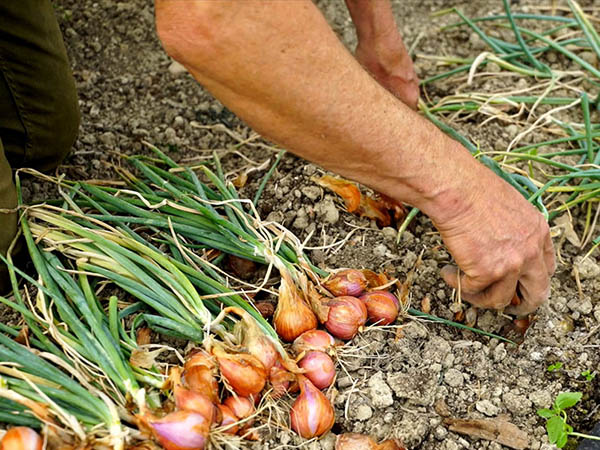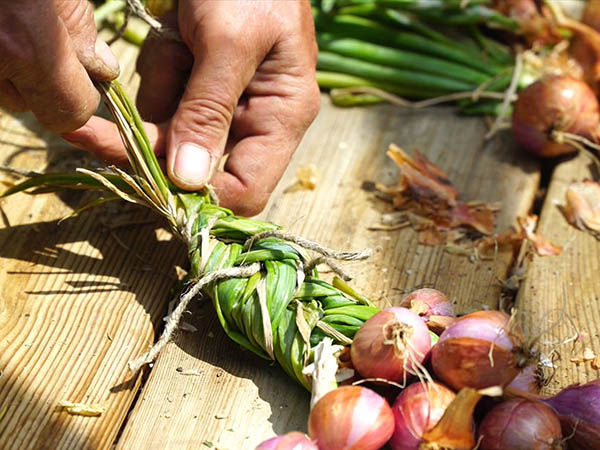Step-by-step instructions for growing shallots
Soil
Shallot plants fare best in light sandy soil, and do poorly in heavy damp soil. For clay soil, plant in raised beds in order to facilitate surface water drainage.
Fertilization
In well-kept vegetable gardens, shallots grow well in soil containing the remains of fertilizers used for previous crops. Avoid spreading manure just before planting. If organic fertilizers have been applied to soil, wait 5 to 6 months before planting shallots.


Planting
Choose a spot that has not been cultivated with plants belonging to the Allium family (garlic, onion, leek) in the last 3 to 5 years. Plant bulbs so the tip is just showing, and firm the soil around them. Depending on size, plant 12-20 cm apart in rows 25-40 cm apart.
Caring for plants
shallots are very ecological. Hoeing the soil around the bulbs on a regular basis without damaging them is enough to keep plants healthy. During prolonged periods of dry weather, watering the soil during the formation of bulbs is enough to keep the plants growing well. Using certified plants is a good way of preventing the spread of diseases (viruses, rot, nematodes), plus certified shallots rarely require chemical treatments against diseases.

The harvest of shallots

Shallots can be harvested for use as green onions, or after the tops have died down as dry bulbs which are used in the same way as garlic or onions.
For use as green onions
Harvest plants as needed as soon as the bulb is formed. Certified shallots are entirely edible (leaves + bulb) when harvested for use as green onions.
Shallots harvested as dry bulbs
Harvest plants when tops have died down (half or two-thirds) and leave bulbs to dry in the sun for 2 to 3 days.
Shallot planting and harvesting calendar

Storing shallots
Store shallots in bunches, crates or braids (like garlic) in a dry ventilated room. Grey shallots can be stored up until December and pink shallots up until April-May.
Shallots keep well in a cool room.
Shallot braids are a warm homely decoration for kitchens and dining rooms. Certified shallot plants with their larger and smoother bulbs are both a feast for the eye and the palate!
Shop-bought shallots have sometimes been refrigerated: in which case they will rapidly start germinating, leaving only a flat empty bulb. This is not the case for home-grown certified shallots, which keep very well.

